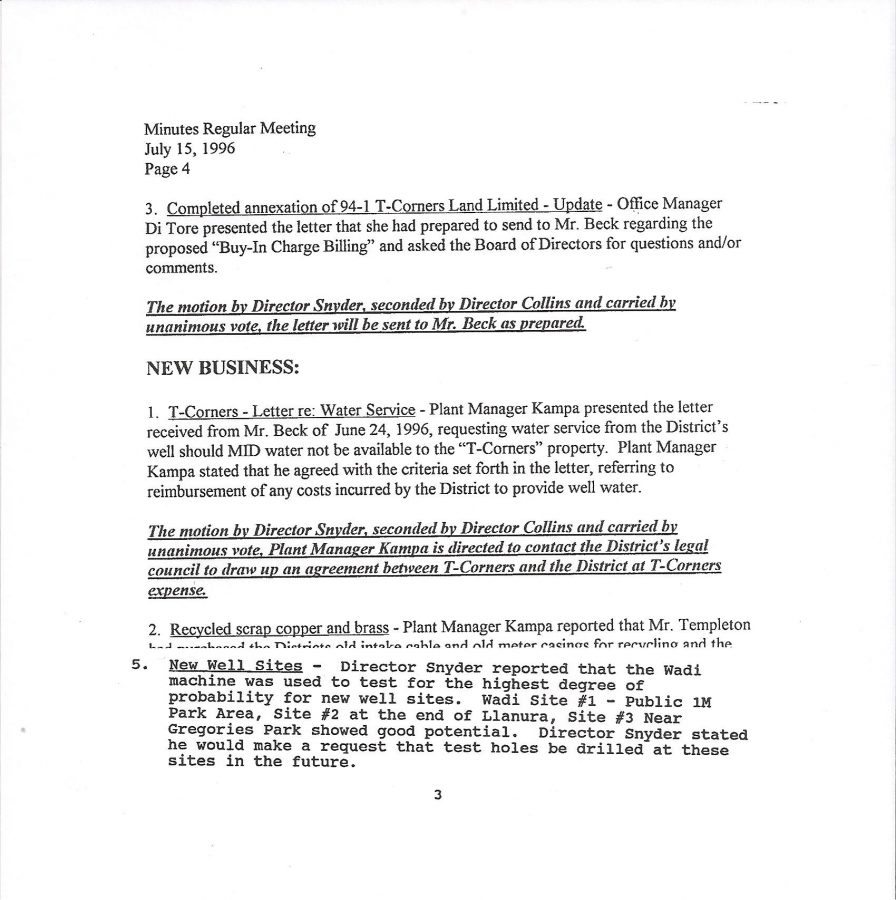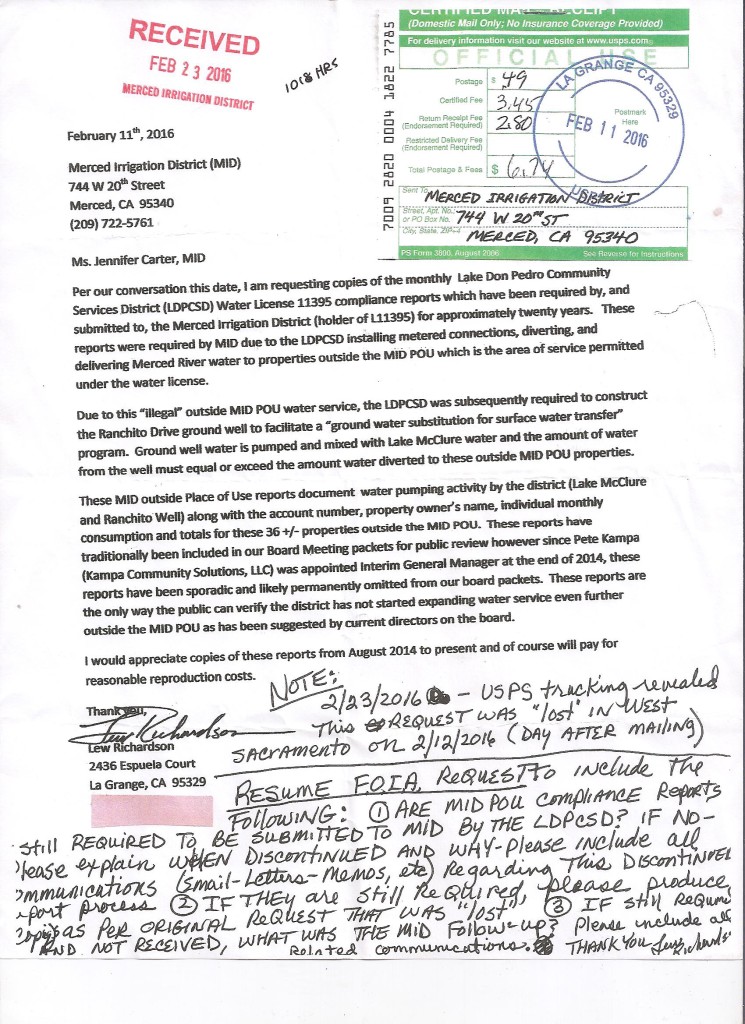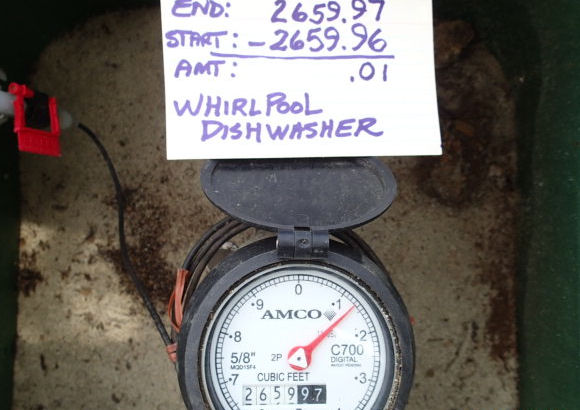SOME POINTS OF CLARIFICATION
Familiar with the SO GOSIP (Same Old Group of Special Interest People) and their penchant for spreading untruths, I would once again like to reiterate some basics about my blog postings.
Perhaps a clarification of what the SO GOSIP are would be helpful.
“SO GOSIP” is a term referencing those folks who support things that are often in conflict with, or contrary to, normal operating procedures and don’t make much sense. I thought it humorous because a common activity of this SO GOSIP is to repeat untruths so many times those who do not know (or understand) the truth begin to believe the SO GOSIP and their disinformation.
Their activities are often directly tied to a clear and tangible benefit to real estate and land development interests. Some of them are in the real estate industry. (PLEASE! I am not saying real estate people are bad, however, like in all professions or trades, there are always those who fail to perform as required and they are usually found near issues that can be exploited to their benefit.)
Past examples include, but are in no way limited to, the LDPOA failing to enforce CCRs during massive uncontrolled subdivision growth, or the LDPCSD catering to developer’s projects and having a land development corporation employee actually on the board of directors often instructing on the the day-to-day business activities. (Being the former, and first GM of LDPCSD certainly assisted in this role. Conflict of interest?)
Other times a clear community detriment could be perceived such as the proposed selling our undeveloped natural parks to this land developer, or expanding water service beyond what the water license permits and using expensive ground water substitution to do so.
JUST SHORTHAND
Anyway, the term does not refer to any particular individual(s) and the actual number of their participants fluctuates greatly depending upon the “cause at the time”; what people want or are willing to believe; or how many discover the truth, realize they are being used by experienced handlers and stop making unintentional fools of themselves. The SO GOSIP are always recruiting and a favorite intern spokesperson often will appear from anonymity at any given time to cheer lead the cause.
THE MOST IMPORTANT POINT REGARDING THIS WEBSITE
First and foremost this website is my weBLOG, or BLOG and is nothing but a public journal of my thoughts, ideas, photographs, videos, comments and of course the dreaded OPINION. Lord have mercy on us all. lol
I do not set out to offend or upset anyone so please excuse any failed attempts at humor to make a point. Please also appreciate this is still a free country and each of us has the right to freely express ourselves within socially acceptable parameters. But there’s the rub. Some people are offended with others who just don’t agree with their position and re actively/emotionally strike out with nasty, vulgar personal insults, and untruths. Such behavior is not only unnecessary and impolite but is often acknowledged as evidence that their position is weak or completely devoid of merit and name calling is all they have in defense.
REGARDING THE LDPCSD GM
There is no doubt in my mind our GM possesses years of professional water industry training; hands on water facility experience; a multi-perspective from both the private and public sector side[1] of water treatment; and as president of his own water management company has honed his “can do” persuasive skills to a very high degree.
Obviously there are different approaches to problem solving and accomplishing goals in the public realm and not everybody agrees with what is considered acceptable activity for their community, county, state or even country. (Private business is held to a different standard.)
Some folks don’t believe regulations should be followed if they conflict with a beneficial goal because a certain amount of risk can often achieve much more in a shorter period of time. Others believe regulations should be followed regardless of inconvenience or obstacle to the goal because they (regulations) were designed to prevent known and foreseeable negative consequences if violated.
Recently our LDPOA Board has provided the GM with extraordinary powers of management to accomplish goals due to a serious drought and the time estimated by the GM to complete necessary projects for uninterrupted water service to existing customers. I believe the far majority of customers would support such an endeavor as stated.
Unfortunately, I fear this extra “granted” power[2] has been deliberately and secretly used to obtain the necessary infrastructure (water wells) for the GM, with the approval and support of the Board of Directors, to fundamentally change the intended function and operation of our surface water treatment plant. This apparently continues the GMs previous LDPCSD employment history of water service expansion beyond the permitted areas under the water license under which the LDPCSD operates.
The extremely expensive project of constructing and developing ground water wells (for third party use) was accomplished by the GM and Board of Directors under the guise of protecting current customer water availability during a prolonged emergency drought. This re-configuration of our surface water treatment plant’s intended function and operation, I believe, is a complete betrayal of public trust by those directors supporting the program.
Would study of the numerous grant applications reveal the ulterior motive or provide evidence of intentional concealment of any facts?
Let me rephrase that, were Grantors or administrators of funds advised the LDPCSD already had an approved functioning “alternate water source” for over 20 years and the reason that source had not been further developed was due to the fact that ground well was the legal remedy for past multiple violations of water license restrictions?
As a classified disadvantaged community seeking special consideration for grant funding is it not disingenuous, or even illegal, to request funds for a public agency for one purpose while specifically planning to use them for another?
Was grant money applied for to specifically circumvent the prohibitions of district service to properties not entitled to the water our LDPCSD pumps, treats, stores, and distributes under L11395?
Would the LDPCSD still have received those funds for construction of new water wells if the grantors knew they were necessary for expanding water service connections EVER FURTHER outside the permitted use area under the license of which it operates?
If these wells were supposedly developed for sustainability during drought or other emergency, aka, to “keep the water flowing for existing customers”, that should be their ONLY FUNCTION FOR PERPETUITY. Not as a special benefit to those outside the legal area of the water license.
NOTICE THE SIMILARITY?
Lake Don Pedro is a microcosm of the entire nation. Take for example my recent post with that sign I first thought was a “For President” advertisement. It probably upsets some folks who think Hillary Clinton is trustworthy, a great leader, and truly presidential material. Fine, that’s their opinion. You already know mine. So what?
I don’t hate those who support and believe Hillary Clinton did nothing wrong by having a privately owned computer server where United States top secret information was stored and evidently hacked by other hostile governments. I don’t despise those folks who want to vote for a woman who very likely (because of what she had done), has indirectly been responsible for untold deaths and major changes in the geo-political/military movement arena due to her intentional storage of classified information in an unsecured server where it could be stolen.
No I do not loathe Hillary or those that support her but rather chalk it up to what they believe to be satisfactory public service by a politician with a rather tarnished detailed history spanning decades. Observing what others support or applaud provides an opportunity to assess their viewpoint of the world and what they believe to be truth.
Whether something makes sense, is logical, or thought to be “just right or wrong” is based on that person’s education, experience and expectations of what constitutes good behavior.
Rarely are things simply black or white, but rather, multitudes of grey.
Lack of hate doesn’t’ equate to respect or trust when credible evidence exists that motives, words or actions are disingenuous.
The question becomes: Are you happy with the direction this CSD is headed with respect to expanding service rather than focusing on existing customers and their water needs now and for the future?
And just like in County, State and National political maters (where we traditionally feel helpless and too weak to make a difference), the only recourse, your only chance of influencing that which you may believe is wrong and unfair, is your vote.
Interestingly the only time you get to vote is when that which you believe needs changing NEEDS MORE OF YOUR MONEY TO CONTINUE EXACTLY THAT WHICH YOU BELIEVE TO BE WRONG!
How peculiar. A political machine tells you one thing, but does another. The machine continues to grow ignoring its own rules while claiming the activity it is good for everyone. It spends millions of dollars, continues to spend, and intends to spend a great deal more under the guise of protecting ALL when in actuality is creating a special benefit for third party interests. The real crazy part is the majority of innocent taxpayers are expected to continue paying the mounting costs – even for outside professional assistance in achieving that goal.
Think of this. The very emergency (drought) that created this machine and the situation to redirect money to change our water plant operation will also be used to elicit even more money under threat of dire consequences if another Proposition 218 is not approved.
The warning will go something like:
IF CUSTOMERS do not vote and approve this Prop 218 for water rate increases you will run out of water, maybe die, and the property you leave your heirs will be worth nothing without the water only we can supply.
Bullshit!
It’s our water and water license 11395 clearly says so.
You have, and intend to continue, providing water to those not entitled while expecting us (entitled water users) to pay for and suffer the consequences of your plan.
VISION 2020 a MYOPIC PURSUIT OF A WATER EMPIRE?
MYOPIC: Defective vision of distant objects, and in this case, how changing this surface water treatment plant is going to threaten sustainability of water for those who have, do, and will continue to pay for what they are legally entitled already under the water license. If this is truly a great idea for everyone there is no reason why those paying the bills should not decide the issue in a fair vote – and that means absentee availability payers as well.
CANCELLED WIDGET AGAIN
This is similar to my cancelled widget – I want to believe it is a good plan but because of the way this GM was hired with the Board’s assistance, who is obviously concealing information from the public (MID POU report in agenda packet – among other things) I find it extremely difficult to trust his motives and long game plan.
Thus far, barring any earth-shattering information which indicates this truly is a great plan for entitled users who pay the bills, I think I’ll pass on this GM/BOARD CREATED WIDGET.
DOES GOVERNMENT SUPPORT THIS TRANSFORMATION?
I would imagine the County and State might appreciate the fact more citizens could be served by an existing state approved and regulated water treatment plant so long as someone else pays for the expansion. Guess who that is?
The modification of License 11395 restrictions has been requested and denied many times. Has something changed here? Is there some kind of “wink and nod” going on with regulating government entities? Have some “you do this, and we’ll do that” handshake agreements already been made under the table?
Is this why things appear so wrong, because there’s a secret deal that the GM and Board cannot divulge to the public yet?
Oh really? Is this an example of the transparency of public government referred to in the Brown Act and subsequent court rulings? I think not.
SELL EVERY DROP! WHO CARES?
One director I served with on the board said more than once he would sell every drop of water we had to whoever wanted it – he didn’t care because it would be revenue for the district. This was an absolutely unbelievable and short-sighted statement which obviously failed to grasp the concept of protecting a resource for future use by those entitled to this “NEW CALIFORNIA LIQUID GOLD”.
(Do not forget our surface water treatment plant pumps some of the purest California Liquid Gold in the State!
Yes, the prolonged drought and legally required environmental releases for wildlife caused the Lake to drop to minimum “dead pool” and was of concern to everyone – animal lovers, varied agricultural industries, hydroelectric energy producers, and of course, those of us who reside up here and require water to survive.
Here’s an interesting distinction between those entitled to Merced River water (Lake McClure) under License 11395 and those who are not – choice.
THOSE ENTITLED TO LAKE WATER UNDER LICENSE HAVE NO CHOICE
The majority of owners in the subdivision have no choice as to where they receive their water – we must be customers of the district as we are prohibited from drilling private ground wells on our properties. We MUST financially support this district because there is no alternative. You cannot demand to have the water cut off to your house because the respective county health department officials would likely condemn your home as uninhabitable without a verified, dependable, and safe water supply. [Little things like adequate sewage disposal and protecting public health/life.]
SEWAGE SIDE NOTE: There is another “large muddy boot ready to drop” on our LDPCSD in the form of the sewer plant on Ranchito Drive near the golf course. Even when thousands of dollars were discovered owed to the District in the past, one still sitting director wanted to “negotiate” the cost down. WHAT? We were almost bankrupt yet some advocated not pursuing the matter at all – to be “nice”.
Can you imagine the added expense for maintenance, repair, replacement, trained personnel, administration, etc. with picking up that white elephant whose construction was a direct response to the uncontrolled development that required more sewage treatment? Heck, those properties that receive the benefit of that sewage treatment system cannot financially meet the costs of keeping it running – not enough paying residents. That should have been the “speculators problem” but naturally it will likely fall on everyone else.
Of course the County wants to “dump” it on the CSD. A CSD that quite obviously already has significant difficulties of its own. How many water agencies in the State of California had their administrative office burned to the ground? And don’t forget, the second fire in the plant was not inexpensive either. We have some true “radicals” in this area and they are dangerous when they don’t get their way.
POOR LDPOA SUBDIVISION
The subdivision never developed as intended and much of that had to do with the abysmal failure of enforce existing regulations. Go figure, huh? Look at what recently happened when a land development corporation was given free rein in this area. How many are happy with how that turned out? That corporation even had an employee sitting on the water board directly influencing how day-to-day operations were carried out usually to the benefit of his primary allegiance employer – which of course was not the LDPCSD. (Follow the money) If you didn’t support their plan you were accused of being “anti-development”, “mean spirited”, “selfish”, ……golf hater! lol
THOSE NOT ENTITLED WATER OUTSIDE SUBDIVISION HAVE A CHOICE
Yes, you can drill your own private ground water well. There is nothing preventing those who need water from drilling their own ground wells.
Yes it is expensive but there are also varied technologies and ways to proceed which might reduce costs depending on your water demand.
Yes in this fractured rock geology ground wells can be unpredictable and risky – but so can lake water with sustained drought as we all know now.
Yes, in some locations the water is not fit for consumption and contains undesirable elements which may or may not be safely removed. Caveat emptor (Let the buyer beware)
Yes, there is another option if you want to live in this beautiful foothill area, purchase some LDPOA property where you are guaranteed water service by the district. (Some did this many years ago then illegally ran extensive piping to the other property outside the subdivision thus creating another outside MID POU service which we still must serve.)
Oh, you don’t want to pay yearly property assessments and have another layer of local government (Association) with their often frustrating rules and regulations enforced by local residents telling you how to live and develop your own property?
I think I understand, you don’t want the subdivision and it’s rules – just our water.
AVAILABLE HIGH QUALITY WATER, IN MY OPINION, IS THE BIGGEST ATTRACTION AND SELLING POINT FOR SUBDIVISION PROPERTY. OUR COMMUNITY’S FUTURE DEVELOPMENT, HEALTH AND SAFETY IS NOT ONLY DEPENDENT UPON THIS WATER, BUT WE ARE SPECIFICALLY ENTITLED TO IT UNDER THE WATER LICENSE – WHY GIVE IT AWAY AND JEOPARDIZE OUR FUTURE FOR OTHERS JUST LOOKING FOR THE CHEAPEST WAY TO DEVELOP AND INCREASE THE VALUE OF THEIR OUTSIDE MID POU PROPERTIES?
Sharing is a great concept but survival should be paramount.
STABILIZE, SECURE and GUARANTEE EXISTING CUSTOMERS FIRST
Why not stabilize, guarantee and PROTECT water availability to those who already have a legal right to that water – both existing and availability customers? You know, those who are paying the bills now are the ones deserving of this district’s efforts and attention not “outsiders” who merely want to usurp our greatest natural resource (and biggest selling point for LDPOA land) for their own purposes of development and/or profit. How many will simply have a new water connection hooked up then sell at an exponentially increased price?
What is so darn difficult to understand here? This is not a matter of being “selfish and not sharing with others”, but rather, an issue of survival predicated on common sense and good judgment by those trusted to represent LDPCSD customers.
DROUGHT HAS BEEN A BLESSING IN DISGUISE
We now know what can happen. We are learning to save and conserve and discriminate as to what landscaping should survive and what needs to be let go. We don’t view water with the same “there’s plenty of it” attitude. We appreciate this necessary resource even more.
Some folks have repeatedly advocated expanding services outside MID POU because we traditionally only use a fraction of our total allotment under the license. (Approximately 1/5th but I have read other fractional representations as well. Obviously it is a moving target and gets into consumption & maintenance values versus unaccounted for water loss).
SIDE NOTE: Speaking of water loss. Has the district ever taken corrective action regarding a known discrepancy in water accounting that evidently occurs on a sitting director’s property? Which happens to have a previously undocumented water line running through his pasture? Near where a stock watering pond suddenly developed in August of 1998? Check out Google Earth, it’s all there. First a little puddle which slowly, year after year, develops into a large pond.
THE “WATER SHARING ARGUMENT” GOES LIKE THIS
P1: “We only use a fraction of what we’re allotted and can therefore spare some and give it to others outside the subdivision”. (says the real estate cheerleader)
P2: “If we have so much water then why are we rationing under penalty of financial fine while watching years of hard work in landscaping suffer and/or perish?” (says the customer with dying landscape)
P1: “That’s because of the drought and environmental releases for wildlife, you see the lake was dry and the water wasn’t there,….ahhh, well,…., ahh, sharing is good….ahummm, …..you don’t share ……you are a selfish rotten, anti-development, … no good person”. (as real estate cheerleader realizes the mistake and backs away screaming insults)
LADIES AND GENTLEMEN WE HAVE A BINGO AT TABLE THREE!
Don’t you see they are apples and oranges? The maximum amount that could be pumped is a set number and immaterial as to the fluctuating number of consumers and amount that can actually be pumped due to physical existence. You can only pump what is there.
[This is why I have always advocated the McClure Point Deep Water Project was, and is, the logical direction to proceed – closer to the dam means deeper water. This drought has facilitated the best time to access the area for construction of intakes and initial piping to above maximum lake level.
Ahhhh, there’s that problem for the people outside the legal use area…..the McClure Point Deep Water Project DOESN’T HELP THEM. IT ONLY ENSURES THAT THOSE ENTITLED TO MERCED RIVER WATER RECEIVE IT WHEN LAKE IS LOW.]
Did our GM/Board refuse the logical answer to this and other droughts because it did not help those “outside the legal use area” which they seem intent on serving? Isn’t that a betrayal to existing customers?
Please explain how expanding water service with ground wells to areas outside the Water License benefits the entitled Merced River water users in the subdivision who may once again have no, or little, water to pump from the lake?
SELECTIVITY OR DISCRIMINATION?
If ground water is used to expand service outside the legal use area, what will be the criteria for property inclusion into this new District service area?
How many new outside MID POU connections are anticipate?
How far will this new service district serve water?
In addition to single family residences, will multi-family structures be approved?
Perhaps temporary housing like motels, hotels, condos, etc. might be approved?
What about the many prior proposed subdivisions that requested and were denied water by the District years ago? Will they have “first come – first served” options? (If so we are already into HUNDREDS AND HUNDREDS OF NEW CONNECTIONS.)
What about brand new subdivision projects – maybe with decorative man-made lakes and ponds as previously proposed?
See any more expansive golf courses, cattle ranches or other agricultural endeavors in the District’s future?
How about businesses, maybe an industrial or manufacturing corporation or two?
Can you envision a large vehicle & equipment washing service?
Is saying “Yes” to one project, and “No” to another, simply service discrimination?
If inappropriate selectivity does take place could the district be held liable for resulting damages due to construction/development delay or refusal?
Maybe that proposed water slide from Coulterville to Waterford (The world famous “Coulterford Slide Development”, or CSD as it is sometimes referred) will have a chance now? That will be one cool ride! ………………….
[yes, some of the above is sarcasm-meant to be lol]
ALREADY HAVE SOME HIGH DEMAND OUTSIDE MID POU ACCOUNTS
Elementary School
Fire Department
Cattle Ranching (and other agricultural endeavors)
Sewer Plant (That’s another “BOOT that will eventually drop on our CSD” since the County wants out. Some deal made already?)
Miscellaneous businesses
Trailer park
Single and Multi family residences
If these new ground wells are used exclusively by the existing customers (including those currently outside the MID POU listed above), fine, no harm, no foul. Whether this drought continues or another one in the future is equally as disastrous, at least the existing customers would have these new wells (as promised) for backup.
Isn’t responsibly taking care of what you already possess more important than taking on more water consuming entities?
Just think if those directors in the past who wanted expansion with the many proposed subdivisions were successful? What would we be looking at now during this drought? Only makes matters worse for everyone.
VISION 2020 DIRECTOR CAUTION
Speaking of directors, check out the GM’s VISION 2020 admonition to them on page 77 of the December 11, 2015 packet. (a portion quoted below)
As stated in prior meeting, this is YOUR strategic plan, so you must
Feel very comfortable with approving this document, as it will drive many future actions and decisions. Please make sure that you have a full understanding of the goals, objectives and actions of this plan. The purpose of the discussion today is to make sure the full Board
is in support of the plan, and that it reflects your vision of where you want to see the District in 2020. At this meeting, the Board can make any changes, modifications, additions, clarifications and deletions it sees fit. The Board should be commended for undertaking the effort to prepare this first ever strategic plan. The results of the plan will drive daily work, budgets, benchmarks/expectations and actions for many years to come. Congratulations!”
YOUR STRATEGIC PLAN
YOU MUST FEEL comfortable with approving
WILL DRIVE FUTURE actions
MAKE SURE YOU HAVE FULL UNDERSTANDING
MAKE SURE FULL BOARD IS IN SUPPORT
REFLECTS YOUR VISION
WHERE YOU WANT to see District
Whoa there cowboy……
Talk about preemptively assigning future DIRECTOR RESPONSIBILITY for what is undoubtedly going to happen when greed, circumvention of rules and special deals are made with complete disregard for the existing District customers, both water consuming and availability.
WHO’S STRAGETIC PLAN IS THIS AGAIN?
This GM pushed for expanded water service outside the permitted use area twenty years ago during his first term of employment with the district. The very day he resigned he encouraged the board to expand district boundaries even further. There’s nothing really new or exciting about his dream of building a Water Empire on the financial backs of the 99% of entitled water users.
ANY DIRECTOR WHO SUPPORTS THIS PLAN TO RADICALLY CHANGE THE FUNCTION AND OPERATION OF OUR SURFACE WATER TREATMENT PLANT SHOULD REALIZE THEY ARE THE ONES WHO TOOK A SOLEMN OATH OF OFFICE, NOT THE GENERAL MANAGER.
Also not taking that Oath are the GMs employees at Kampa Community Solutions, employees with other businesses, companies, corporations, and the other vocal cheerleaders advocating this major re-direction of our surface water treatment plant. Heck, many have made, are making, and will continue to make very good money regardless of what happens to the rest of us in the future.
Directors in a Public Service agency, however, do take that Oath of Office and therefore do have legal duties and obligations to the District and therefore, its customers. It would be quite unfortunate if any one, or all of them (as suggested in the admonition), mistakenly believed they were doing something beneficial only to later discover they had “been had” and gambled and lost both their personal and public service reputation. It’s happened many times before, and it will most assuredly happen again. Stop, take a deep breath and think about what you are doing.
GAMBLING WITH ANOTHER’s MONEY IS EASY
Only district customers will be injured, with the possible exception of a director or two if a subsequent investigation evidenced a serious breach of duty and/or a wrongful intentional act subject to criminal and/or civil action. (I see there is still a pending civil suit by two former CSD employees that started many years ago and personally understand the stress, frustration and pain experienced for years are hardships that will not be erased or undone no matter how the case is finally resolved.)
ARE THERE CLUES TO SOMETHING MUCH WORSE?
Who is to say some of the same techniques used by a sitting director and only applicant for the GM position (who was subsequently appointed on the spot) are not currently being used to reconfigure our nonprofit CSD into a CASH COW FOR OTHER OUTSIDE WATER INTERESTS?
Seriously, bare with me here for a bit.
The past behavior is pretty clear – since Director information (marked confidential) was clearly provided to this Director’s longtime friend (friend was also the president of his own for-profit water management company) PRIOR to public announcement of the open GM position.
This created and guaranteed a closed recruitment process for a public agency’s general manager position because without public announcement of the open position there could not possibly be other applicants.
This “insider information” also provided adequate time for the applicant to prepare a detailed contract for exclusive board consideration and approval at the next District Board of Directors Meeting.
Four of five LDPOA Directors (including the one who had furnished the confidential information of the GM position opening – conflict of interest here?) approved the contract and appointed the applicant as new IGM at that very meeting. This was done without any rudimentary investigation or verification as to the applicant’s employment background much less his past employment with the very CSD that just hired him!
Had the District performed a basic investigation it would have been advised of any prior employee performance difficulties and the fact the applicant had a history of advocating District expansion beyond the legal limits of Water License 11395.
Did the other three directors also already know these facts when they appointed him? Because they knew he would assist them in expanding district service outside legal limits as they desired?
It should be noted AGAIN that the sitting director who furnished the confidential information to our GM has been one of the largest consumers of water outside the MID POU for over twenty years. Hey, being a cattle rancher takes lots of water.
There is documented information indicating this director also (with intent) wrongfully appropriated another party’s meter. This information wasn’t even discovered until nine years after it had been appropriated when the rightful owner’s account was re-credited with the “liberated” meter. Somehow this director maintained use of a water meter despite specifically being denied one in the past. This director possesses 2 of the 36 outside MID POU meters and has continually used chlorinated water for cattle ranching that was unequivocally intended for domestic residential use.
We read and hear about “insider trading” and how corrupt the financial system can be due to the staggering amounts of money people make through “just passing along a little confidential information”. Can you imagine how much it would be worth to some property owners, land developers, investors, contractors and other real estate related fields if they obtained confidential information as to when and where water would be available? What about those seeking special consideration of their particular property and/or project through “under the table” incentives-aka bribes?
Don’t believe this is possible? What about incorrect LDPCSD information being furnished to other government agencies? (that it could serve river water outside POU) Consider the past unreported burglaries of LDPCSD records requested by the Grand Jury that were never located; water connections/meters obtained using adjacent property Assessor Parcel Numbers to confuse and conceal actual entitlement; director resignation following Superior Court plea for false information to a peace officer during a Grand Jury investigation; fabrication of records by a former office employee, complete destruction of our administration office by arson, and confidential LDPCSD information provided to a GM applicant by a sitting OMIDPOU Director? And now that selected GM intends to dramatically change our water treatment and distribution operation with the blessings of YOUR ELECTED/APPOINTED BOARD OF DIRECTORS!
“Golly gosh! Bribery and payola sound relatively mild compared to what has already happened”.
Wake up and smell the chlorine. Realize this blog’s motto:
ANYTHING VALUABLE REQUIRES PROTECTION, is absolutely correct.
There is a current plan to hijack our “California Liquid Gold” and we, the entitled users, are expected to pay for the heist!
My best to you and yours, Lew
PS after thoughts:
Can you imagine what sort of information/evidence will eventually turn up in the next ten years regarding this reconfiguration of our surface water treatment plant into a “cash cow” for those not entitled to water under License 11395?
Should these new grounds wells be designated “exclusive use” for third parties outside legal service area under L11395?
Think about this; if drought drains the lake to where pumping to the plant is impossible, those on ground well water substitution will have water and those in the subdivision won’t. Does that make sense to you?
[1] There is also no doubt he was very familiar with the concept of “government transparency” as required under the Brown Act .
[2] Apparently there has also been later Board ratification for activities by the GM that were performed/executed without the legally required Board approval.













































